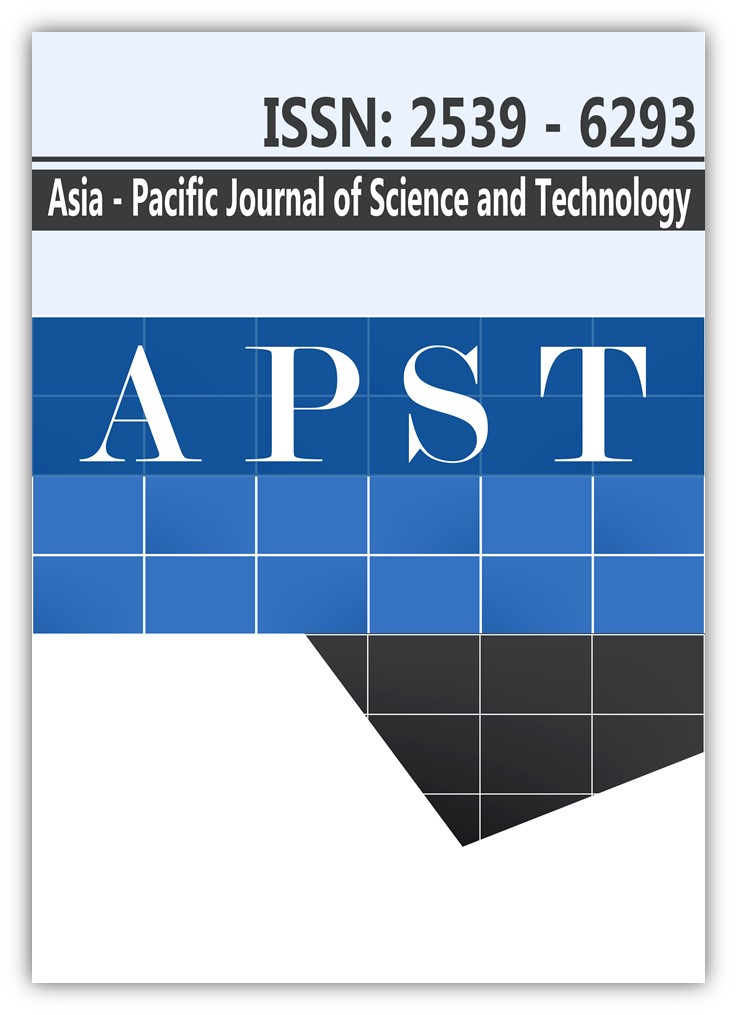Clinical features of eosinophilic meningitis caused by Angiostrongylus cantonensis in Thailand: a systematic review Clinical EOM
Main Article Content
Abstract
Angiostrongylus Eosinophilic Meningitis (AEM) is an emerging disease worldwide. The majority of reported cases are from Thailand. This study aimed to evaluate whether clinical features of AEM in Thailand. We conducted a systematic review using PubMed and Scopus databases. Search terms included “eosinophilic meningitis,” “parasites,” “Angiostrongylus cantonensis,” and “humans.” There were 1,688 potential articles from the two databases after duplication removal. Of those, 15 were fully reviewed and eight were included in the analysis. The eight articles that were analyzed were all reports of studies in northeastern Thailand. There were a total of 527 patients, and the majority were male (with the highest proportion being 84.3%). The most common clinical feature was headache, while fever and neck stiffness were found in 80 (15.2%) and 215 patients (40.8%), respectively. Paresthesia was found in 51 patients (9.7%). This study raises awareness of physicians and healthcare personnel on this emerging zoonotic infection with a bulk of characteristic clinical presentation.
Article Details
References
Wang QP, Lai DH, Zhu XQ, Chen XG, Lun ZR. Human angiostrongyliasis. Lancet Infect Dis. 2008;8: 621-630.
Morassutti AL, Thiengo SC, Fernandez M, Sawanyawisuth K, Graeff-Teixeira C. Eosinophilic meningitis caused by Angiostrongylus cantonensis: an emergent disease in Brazil. Mem Inst Oswaldo Cruz. 2014;109:399-407.
Sawanyawisuth K, Chotmongkol V. Eosinophilic meningitis. Handb Clin Neurol. 2013;114:207-215.
Aekphachaisawat N, Sawanyawisuth K, Khamsai S, Chattakul P, Takahashi K, Chotmongkol V, et al. An ecological study of eosinophilic meningitis caused by the nematode, Angiostrongylus cantonensis (Chen, 1935) (Nematoda: Metastrongylidae). Parasitol Int. 2019;72:101944.
Aekphachaisawat N, Sawanyawisuth K, Phitsanuwong C, Khamsai S, Chattakul P, Chomtmongkol V, et al. A web-based surveillance model of eosinophilic meningitis: future prediction and distribution patterns. Epidemiol Biostat Public Health. 2019;16:e13113-1.
Chotmongkol V, Sawanyawisuth K, Thavornpitak Y. Corticosteroid treatment of eosinophilic meningitis. Clin Infect Dis. 2000;31:660-662.
Chotmongkol V, Wongjitrat C, Sawadpanit K, Sawanyawisuth K. Treatment of eosinophilic meningitis with a combination of albendazole and corticosteroid. Southeast Asian J Trop Med Public Health. 2004;35:172-174.
Chotmongkol V, Sawadpanitch K, Sawanyawisuth K, Louhawilai S, Limpawattana P. Treatment of eosinophilic meningitis with a combination of prednisolone and mebendazole. Am J Trop Med Hyg. 2006;74:1122-1124.
Kittimongkolma S, Intapan PM, Laemviteevanich K, Kanpittaya J, Sawanyawisuth K, Maleewong W. Eosinophilic meningitis associated with angiostrongyliasis: clinical features, laboratory investigations and specific diagnostic IgG and IgG subclass antibodies in cerebrospinal fluid. Southeast Asian J Trop Med Public Health. 2007;38:24-31.
Jitpimolmard S, Sawanyawisuth K, Morakote N, Vejjajiva A, Puntumetakul M, Sanchaisuriya K, et al. Albendazole therapy for eosinophilic meningitis caused by Angiostrongylus cantonensis. Parasitol Res. 2007;100:1293-1296.
Chotmongkol V, Kittimongkolma S, Niwattayakul K, Intapan PM, Thavornpitak Y. Comparison of prednisolone plus albendazole with prednisolone alone for treatment of patients with eosinophilic meningitis. Am J Trop Med Hyg. 2009;81:443-445.
Sawanyawisuth K, Takahashi K, Hoshuyama T, Sawanyawisuth K, Senthong V, Limpawattana P, et al. Clinical factors predictive of encephalitis caused by Angiostrongylus cantonensis. Am J Trop Med Hyg. 2009;81:698-701.
Sawanyawisuth K, Sawanyawisuth K, Senthong V, Limpawattana P, Phichaphop A, Intapan PM, et al. How can clinicians ensure the diagnosis of meningitic angiostrongyliasis? Vector Borne Zoonotic Dis. 2012;12:73-75.
Wang J, Zheng XY, Yin CH, Guo ZZ, Qi HY, Li XL, et al. Epidemiological analysis on 141 cases of angiostrongyliasis cantonensis in Beijing. Zhonghua Liu Xing Bing Xue Za Zhi. 2008;29:27-29.
Sawanyawisuth K, Chindaprasirt J, Senthong V, Limpawattana P, Auvichayapat N, Tassniyom S, et al. Clinical manifestations of Eosinophilic meningitis due to infection with Angiostrongylus cantonensis in children. Korean J Parasitol. 2013;51:735-738.
Federspiel F, Skovmand S, Skarphedinsson S. Eosinophilic meningitis due to Angiostrongylus cantonensis in Europe. Int J Infect Dis. 2020;93:28-39.
Tseng YT, Tsai HC, Sy CL, Lee SS, Wann SR, Wang YH, et al. Clinical manifestations of eosinophilic meningitis caused by Angiostrongylus cantonensis: 18 years' experience in a medical center in southern Taiwan. J Microbiol Immunol Infect. 2011;44:382-389.
Chen F, Chen SR, Li KR, Li TH, Fang W, Luo JJ. Investigation on outbreak of angiostrongyliasis cantonensis due to consumption of snail food in Dali City. Zhongguo Xue Xi Chong Bing Fang Zhi Za Zhi. 2011;23:687-690.
Xue DY, Ruan YZ, Lin BC, Zheng RY, Fang JQ, Zhao QX, et al. Epidemiological investigation on an outbreak of Angiostrongyliasis cantonensis in Wenzhou. Zhongguo Ji Sheng Chong Xue Yu Ji Sheng Chong Bing Za Zhi .2000;18:176-178.
Lai CH, Yen CM, Chin C, Chung HC, Kuo HC, Lin HH. Eosinophilic meningitis caused by Angiostrongylus cantonensis after ingestion of raw frogs. Am J Trop Med Hyg. 2007;76:399-402.
Wan KS, Weng WC. Eosinophilic meningitis in a child raising snails as pets. Acta Trop. 2004;90:51-53.
Sawanyawisuth K, Sawanyawisuth K, Senthong V, Limpawattana P, Intapan PM, Tiamkao S, et al. Peripheral eosinophilia as an indicator of meningitic angiostrongyliasis in exposed individuals. Mem Inst Oswaldo Cruz. 2010;105:942-944.
Leonard JM. Central nervous system tuberculosis. Microbiol Spectr. 2017;5(2).
Fouad R, Khairy M, Fathalah W, Gad T, El-Kholy B, Yosry A. Role of clinical presentations and routine CSF analysis in the rapid diagnosis of acute bacterial meningitis in cases of negative gram stained smears. J Trop Med. 2014;2014:213762.


